Wheel Bearing Adjustment 11 Inch Axle
Preliminary Inspection
Important: Ensure that the brakes are fully released and do not drag.
Pull or push the tire at the top back and forth in order to test the wheel bearing play.
| • | Use a pry bar under the tire as an alternative. |
| • | If the wheel bearing adjustment is correct, the movement will be barely noticeable. |
| • | If the movement is excessive, adjust the bearings. |
Adjustment Procedure
Tools Required
J 2222-C Wheel Bearing Nut Wrench
- Raise the vehicle. Refer to Lifting and Jacking the Vehicle in General Information.
- Remove the axle shaft. Refer to Rear Axle Shaft and/or Gasket Replacement .
- Disengage the lock tab from the outer wheel bearing adjuster nut.
- Remove the outer wheel bearing adjuster nut using the J 2222-C .
- Remove the wheel bearing adjuster nut lock.
- Tighten the inner wheel bearing adjuster nut using the J 2222-C .
- Make sure the bearing cones are seated and are in contact with the spindle shoulder.
- Loosen the inner wheel bearing adjuster nut and retighten the adjuster nut using the J 2222-C .
- Loosen the inner wheel bearing adjuster nut 135-150 degrees by turning the nut counterclockwise using the J 2222-C .
- Install the new wheel bearing adjuster nut lock as follows:
- Install the outer wheel bearing adjuster nut using the J 2222-C .
- Tighten the outer wheel bearing adjuster nut.
- Bend the tab of the wheel bearing adjuster nut lock that aligns with the slot on the outer wheel bearing adjuster nut.
- The final bearing adjustment should be 0.025-0.25 mm (0.001-0.010 in).
- Install the axle shaft. Refer to Rear Axle Shaft and/or Gasket Replacement .
- Install the tire and the wheel assembly. Refer to Tire and Wheel Removal and Installation in Tires and Wheels.
- Lower the vehicle.
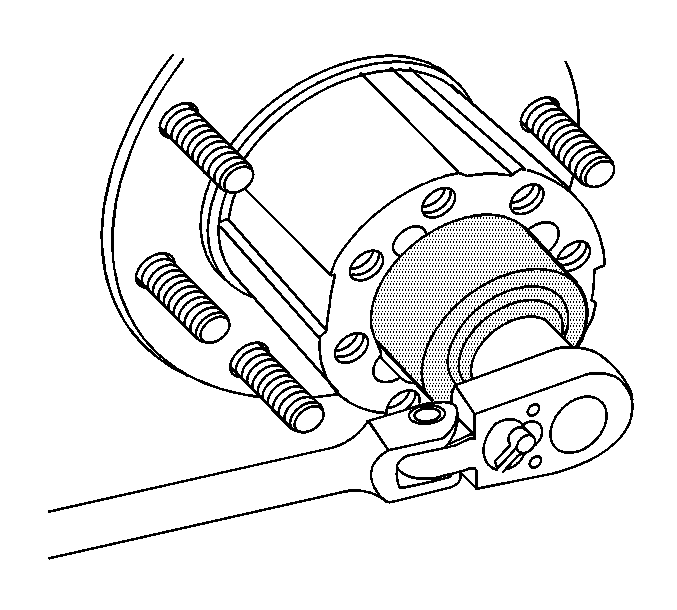
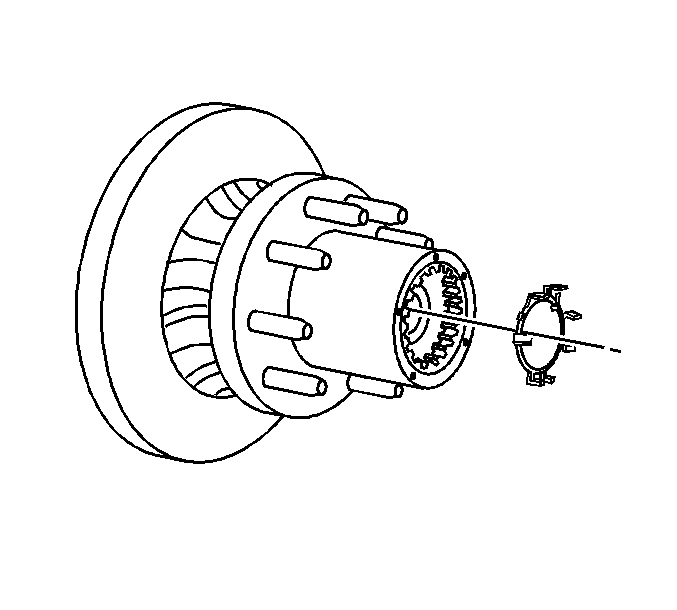

Notice: Use the correct fastener in the correct location. Replacement fasteners must be the correct part number for that application. Fasteners requiring replacement or fasteners requiring the use of thread locking compound or sealant are identified in the service procedure. Do not use paints, lubricants, or corrosion inhibitors on fasteners or fastener joint surfaces unless specified. These coatings affect fastener torque and joint clamping force and may damage the fastener. Use the correct tightening sequence and specifications when installing fasteners in order to avoid damage to parts and systems.
Tighten
Tighten the inner wheel bearing adjuster nut to 68 N·m
(50 lb ft) while rotating the wheel hub assembly.
Tighten
Tighten the inner wheel bearing adjuster nut to 47 N·m
(35 lb ft) while rotating the wheel hub assembly.

| 10.1. | Bend the outer tab on the wheel bearing adjuster nut lock as shown. |
| 10.2. | Install the wheel bearing adjuster nut lock onto the axle shaft aligning the inner tab with the slot on the axle shaft. |
| 10.3. | If the outer tab on the wheel bearing adjuster nut lock does not engage one of the slots on the inner wheel bearing adjuster nut, remove the wheel bearing adjuster nut lock and turn the outer wheel bearing adjuster nut counterclockwise using the J 2222-C until the slot on the inner wheel bearing adjuster nut is aligned with the outer tab on the wheel bearing adjuster nut lock. |
| 10.4. | Re-install the wheel bearing adjuster nut lock. |
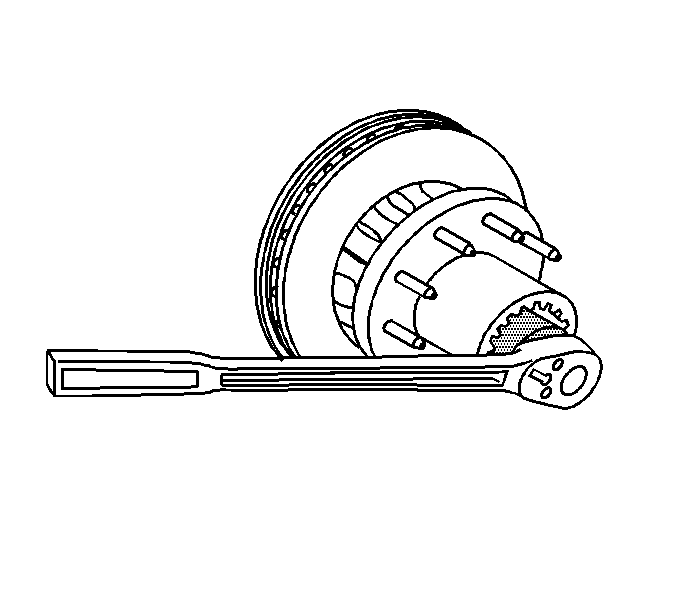
Notice: Use the correct fastener in the correct location. Replacement fasteners must be the correct part number for that application. Fasteners requiring replacement or fasteners requiring the use of thread locking compound or sealant are identified in the service procedure. Do not use paints, lubricants, or corrosion inhibitors on fasteners or fastener joint surfaces unless specified. These coatings affect fastener torque and joint clamping force and may damage the fastener. Use the correct tightening sequence and specifications when installing fasteners in order to avoid damage to parts and systems.
Tighten
Tighten the outer wheel bearing adjuster nut to 88 N·m
(65 lb ft).
Specification
Bend on of the tab of the wheel bearing adjuster nut lock over the outer
wheel bearing adjuster nut to a minimum of 60 degrees.
Wheel Bearing Adjustment 10.5 Inch Axle
Preliminary Inspection
Important: Ensure the brakes are fully released and do not drag.
Pull or push the tire at the top back and forth in order to test the wheel bearing play.
| • | Use a pry bar under the tire as an alternative. |
| • | If the wheel bearing adjustment is correct, the movement will be barely noticeable. |
| • | If the movement is excessive, adjust the bearings. |
Adjustment Procedure
Tools Required
J 2222-C Wheel Bearing Nut Wrench
- Raise the vehicle. Refer to Lifting and Jacking the Vehicle in General Information.
- Remove the axle shaft. Refer to Rear Axle Shaft and/or Gasket Replacement .
- Remove the hub adjuster nut retaining ring.
- Remove the adjuster nut lock key.
- Tighten the wheel bearing adjusting nut using the J 2222-C .
- Turn the adjusting nut counterclockwise until the nut is loose using the J 2222-C .
- Turn the adjusting nut clockwise until the nut contacts the bearing cone. Torque on the nut must be zero to finger tight.
- Insert the adjusting nut lock key into the keyway using one of the following procedures:
- Install the retaining ring.
- Install the axle shaft. Refer to Rear Axle Shaft and/or Gasket Replacement .
- Inspect the lubricant level and add, if necessary. Refer to Lubricant Level Check .
- Lower the vehicle.
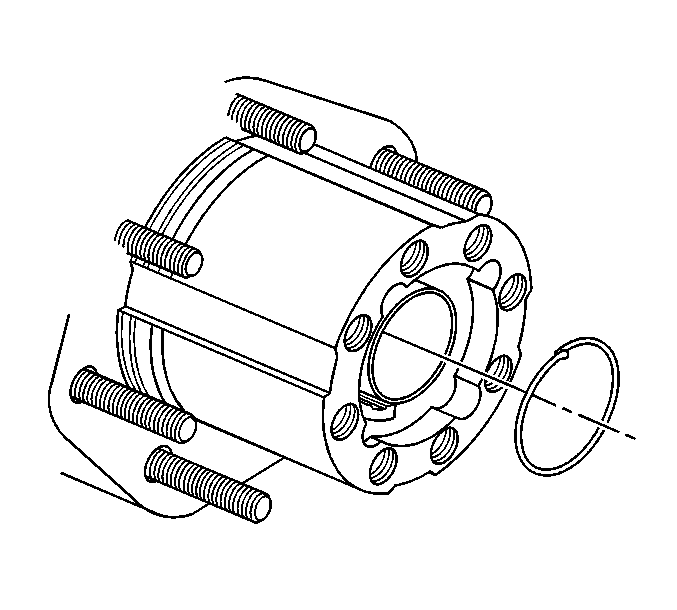
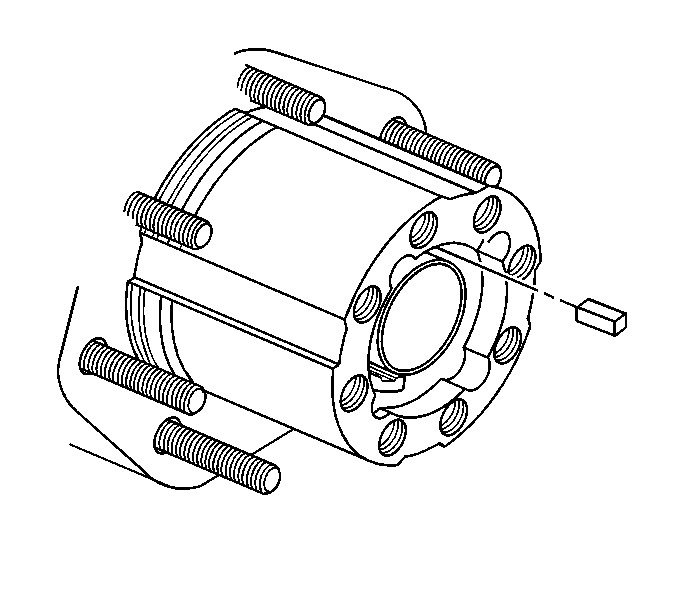
Notice: Refer to Fastener Notice in the Preface section.

Rotate the hub in the opposite direction to the way the adjuster nut is turning.
Ensure the inner bearing and the seal seats against the spindle shoulder.
Tighten
Tighten the adjusting nut to 70 N·m (52 lb ft).

| • | If the adjusting nut slot is in alignment with the keyway in the axle spindle, insert the adjusting nut lock key into the keyway in the axle spindle. |
| Important: Do not turn the adjusting nut more than one slot counterclockwise in order to align the adjusting nut slot with the keyway in the axle spindle. |
| • | If the adjusting nut slot is not aligned with the keyway in the axle spindle, turn the adjusting nut counterclockwise until the adjusting nut slot is in alignment with the keyway in the axle spindle and insert the adjusting nut lock key. |

